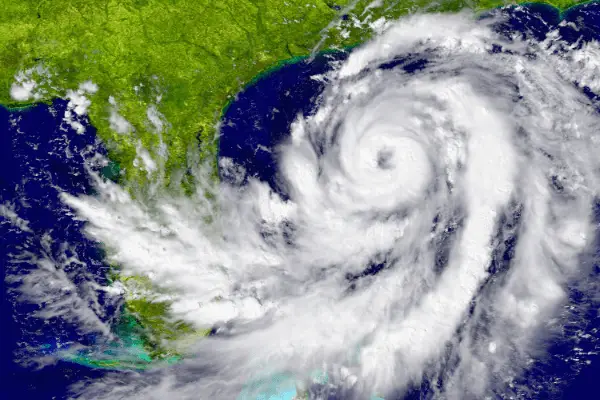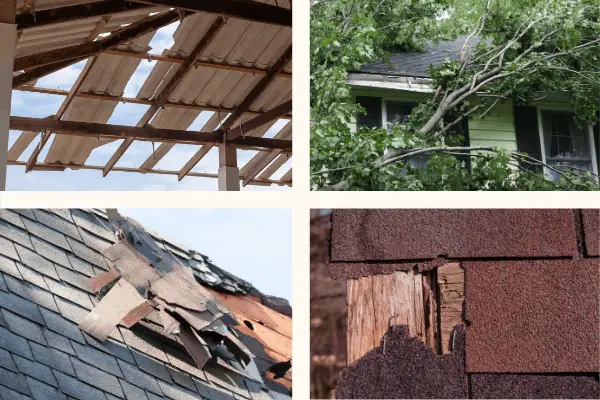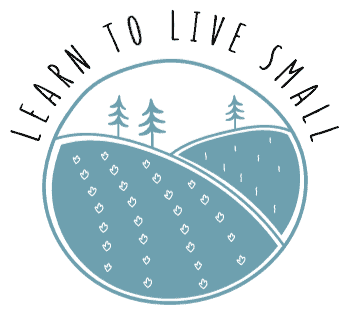As the tiny house movement grows in popularity, people are naturally led to wonder about the most important feature in a home: safety! A home isn’t really a home if it isn’t safe for you and your family.
Are tiny houses safe in storms?
Yes, tiny houses are safe in storms. They are as safe as traditional homes when built to International Building Codes.
That said, due to the fact that tiny houses are so small in size (less than 400 square feet), they can be comparatively weaker if they do not comply strictly with building codes like traditional buildings.
However, you can enhance your safety from bad weather by avoiding areas that get too many storms when possible, ensuring adequate structural support when building your home, and getting insurance!
An insurance policy through reputable insurance companies is key to getting back to ‘normal’ even if damage is minor.
Let’s further break down the potential dangers to tiny houses during severe weather and how to mitigate those dangers to keep your tiny house safe in storms.
Tiny houses vs traditional houses
Do tiny house builders not comply with building codes? Of course they do! Tiny houses are built with the same durable materials that traditional homes are and undergo inspection too.
A tiny house on wheels has to also be lightweight for easy mobility, but that does not mean that builders will compromise on building standards or quality.
Their structure is made with heavy-duty steel and wood and so that they can last for decades. The belief that tiny houses fall apart in a few short years is a myth.
Tiny homes, like traditional homes, are also legally supposed to be built on certain standards to survive most natural disasters. But of course, due to their size disadvantage, they can be more susceptible to more extreme weather conditions.
What kind of storms can damage tiny homes?
Heavy rain and floods are by far the most common damage-inflicting agents to all sorts of homes, and tiny homes are no exception. Heavy rain can cause flooding, electrical damage, wood damage, and can even put cracks in a home’s foundational structure.
In places where tornadoes and hurricanes are common, the intense winds can break windows, doors, uproot roofs and trees, damage the structure. Tiny homes on wheels may also have the risk of being knocked over!
Powerful hurricanes are even notorious for knocking down larger homes, so tiny ones can be more susceptible.

Flooding from storms is a concern no matter the size of the house. Any house that is off of the ground (think pier and beam foundations or on wheels) will not take on water as fast as one on a foundation that is particularly below the street level.
Reduce your Risk in a tiny house
Not only can taking some safety precautions to help your tiny house ward off severe storms, but it is also easy and cheap to add protection to tiny houses because of their small size. Small size = fewer materials, right?!
All of this begins well in advance of any storm.
Avoiding danger zones when building or parking
The National Oceanic and Atmospheric Administration (NOAA) states that out of all the hurricanes that strike the country, 40% hit the state of Florida, and 85% of the bigger magnitude storms strike either Florida or Texas.
So these areas and many warm, coastal areas are likely to deal with hurricanes or their residual storms if you are just outside of a coastal area.
Similarly, central states in the US are more prone to tornadoes. Thus, when feasible, one way to ensure your home’s safety from storms is to avoid living in these red zones.
Even if you love the ocean air, this is where a tiny house on wheels has an advantage – it can be moved whenever there is a storm forecast in the region! Of course, the way warnings come oftentimes late, you’d want to strategically steer clear during peak hurricane season, in general if this is your risk mitigation plan.
Storm specific weatherproofing
The next step all tiny house owners must do is to weatherproof their house in the following ways:
- Anchor your house. Anchoring your house will make sure it isn’t lifted off the ground or knocked over by strong winds. Locations prone to have storms have codes to ensure the right anchoring happens.
- Reinforce your windows. Windows are made of glass which is obviously brittle, unlike the rest of the house structure. They are usually the first part of a house to break in a heavy wind storm. If a storm is approaching, it is important to store anything in your yard that can be blown towards the house (patio furniture, toys). Also, window protection like aluminum panels or sheets of plywood is an important added layer to protect your home during an intense storm.
- Secure the roof. If your tiny house has a roof like a sheet metal one, then you must tie it down securely to prevent it quite literally being blown off during a storm. It is a good idea to check for cracks and leaks as part of a good home maintenance plan or at least before a storm rolls in. Repairs from minor issues will keep costly water and safety issues from neglected roofs down the road!
- Insulate your house. If you live in very cold areas, then you might have to worry about snowstorms, too. To prevent your house from freezing, you must choose the right type of heavy-duty insulation during the building stage. Additionally, if you can route pipes through interior walls during construction, your interior home’s heat will prevent issues from pipes getting too cold on top of any snowstorm worries!
- Protect electrical connections. Electric power lines are also amongst the first things to be knocked out during a storm. While you can’t factor in the lines beyond your home, make sure to keep limbs away from any lines that are above ground. Also, if feasible, run lines underground to minimize weather-related power issues when constructing your tiny home.
If you live in a rural county without permitting requirements to be met upfront, they still likely follow International Building Codes. FEMA has updated provisional codes available to help you build for storms or to be more informed when discussing your home’s safety with a contractor.

Stay on top of maintenance to protect your tiny house
Part of staying safe in your tiny home comes down to keep up with maintenance on the home and your land.
Inspecting roofs for loose shingles or leaks can prevent and limit water from entering your home during storms as roof damages are a common risk point during a wind storm.
Keeping your trees trimmed of dead limbs and such will reduce what gets thrown around in high winds. Keeping trees away from power lines reduces the chances of your home losing power.
Even if doing these things on a regular basis just doesn’t happen, a quick check pre-storm can go a long way to keeping your tiny home safe during a storm.
Here’s a list of things to check in an effort to keep the storm out & keep you safe before the storm rolls in:
- Get rid of dead trees or at least tree limbs that could fall and cause damage or injury.
- Make sure all doors and windows are closed, and close your blinds, shades, or curtains over any windows.
- Pick up the yard from lose items like toys, patio furniture, or yard equipment like shovels.
- If you’re in a tiny house on wheels, be sure you have the hitch lock secured, as well as the wheel lock in place.
Prepare a contingency plan
In case you get stranded inside your house during a storm, or you have to relocate completely, make sure you have extra provisions stocked up beforehand whenever a storm is likely to hit. This includes extra food, clothing, first aid kits, hygiene kits, batteries, and a battery-powered radio. This will go a long way to keep you safe in your tiny house during a storm.
Our family has a kit for evacuation as part of our larger emergency planning kit since we know we can’t bring everything in the event we have to leave quickly.
FEMA has a site dedicated to readiness kits such as this that can be tailored to the concerns you are trying to prepare for. Having these backups for weather has also kept us prepared for crazy things like a pandemic.
Don’t forget to prepare an evacuation plan when a major storm has been predicted, as well. Depending on your situation, it may be better to take shelter in a bigger, sturdier building than in your tiny home. I grew up in a mobile home, and the local elementary served as an option for families that did not feel safe in their homes.
That’s why it is a good idea to plan for the worst case scenario in advance. When a storm comes in, you’re dealing with executing a plan versus figuring it out along the way.
Get insured today! Now. For real!
Lastly, but very importantly, get your house insured. Your first step after buying or building a house, big or small, should be to insure it regardless if you paid for the house in cash. This will help you cover financial losses if your house ever faces major damage in a storm.
Recovering from a storm that causes damage can be very difficult to navigate, but if you can take away the financial strain from the storm, you’ll be in a better position to deal with the emotional part of recovery!
This includes flood insurance! Even if you do not live in an area of particular flooding concerns, losses from floods can be catastrophic and difficult to recover from.
